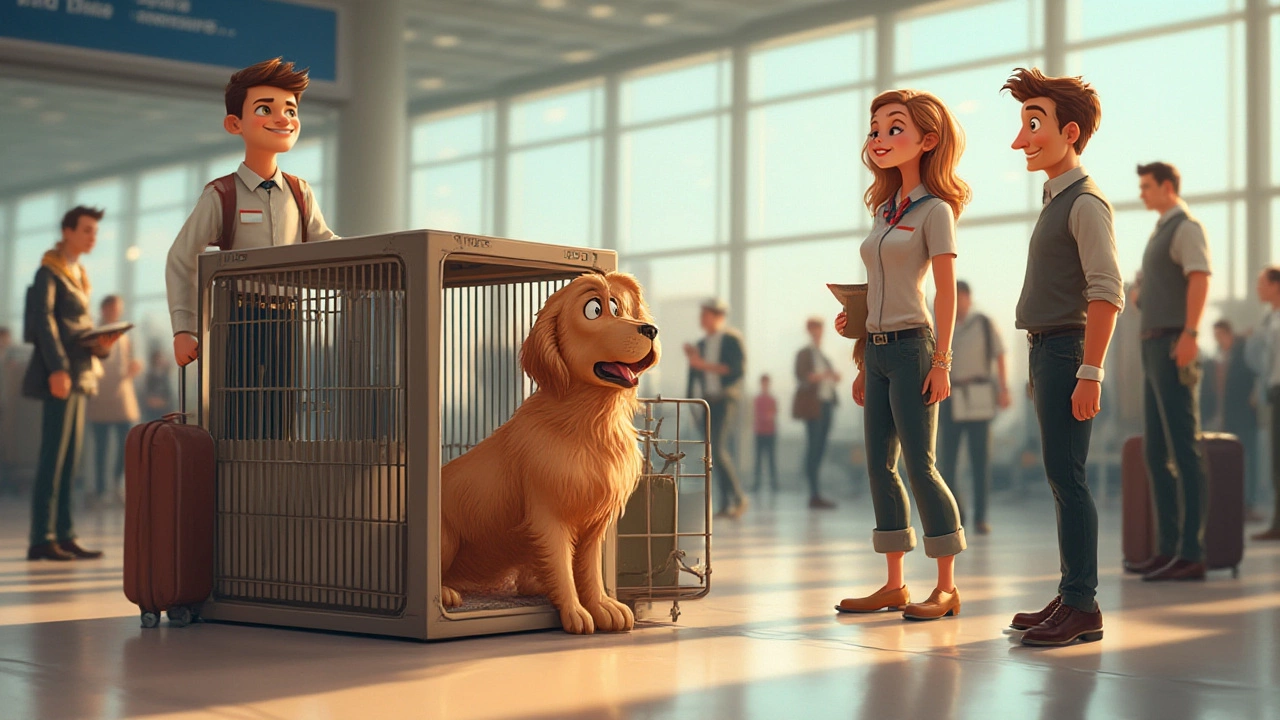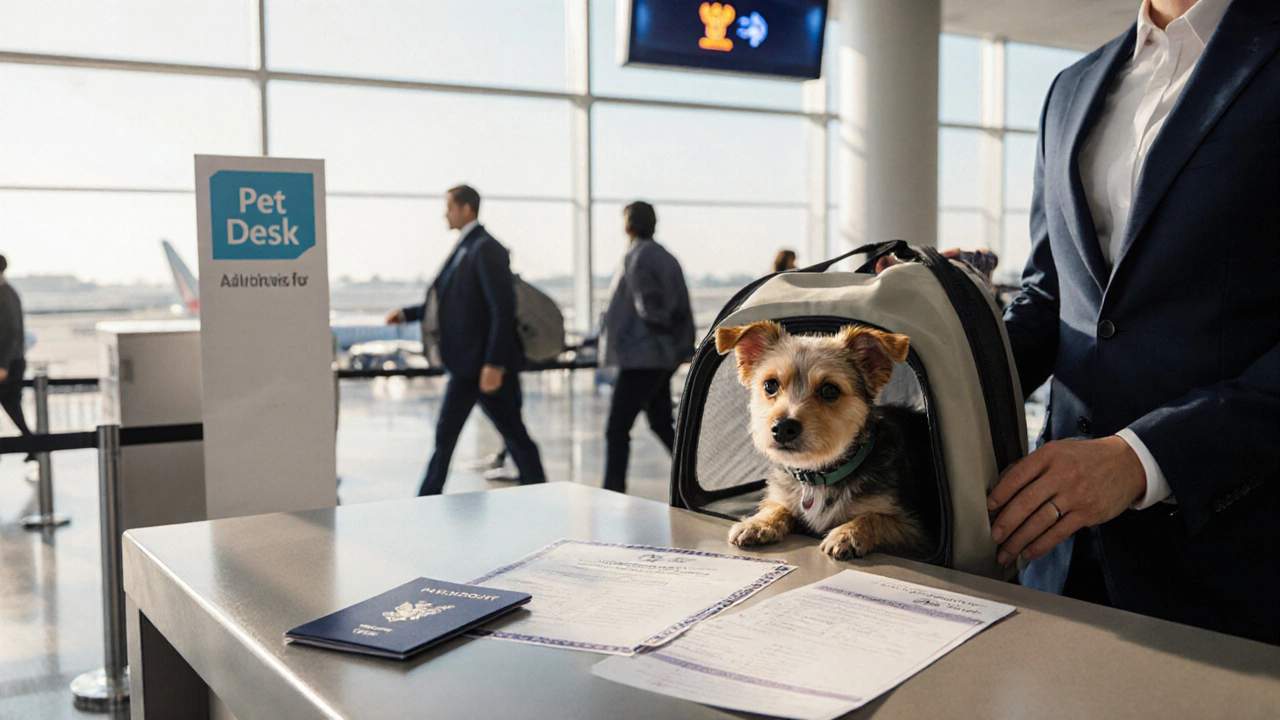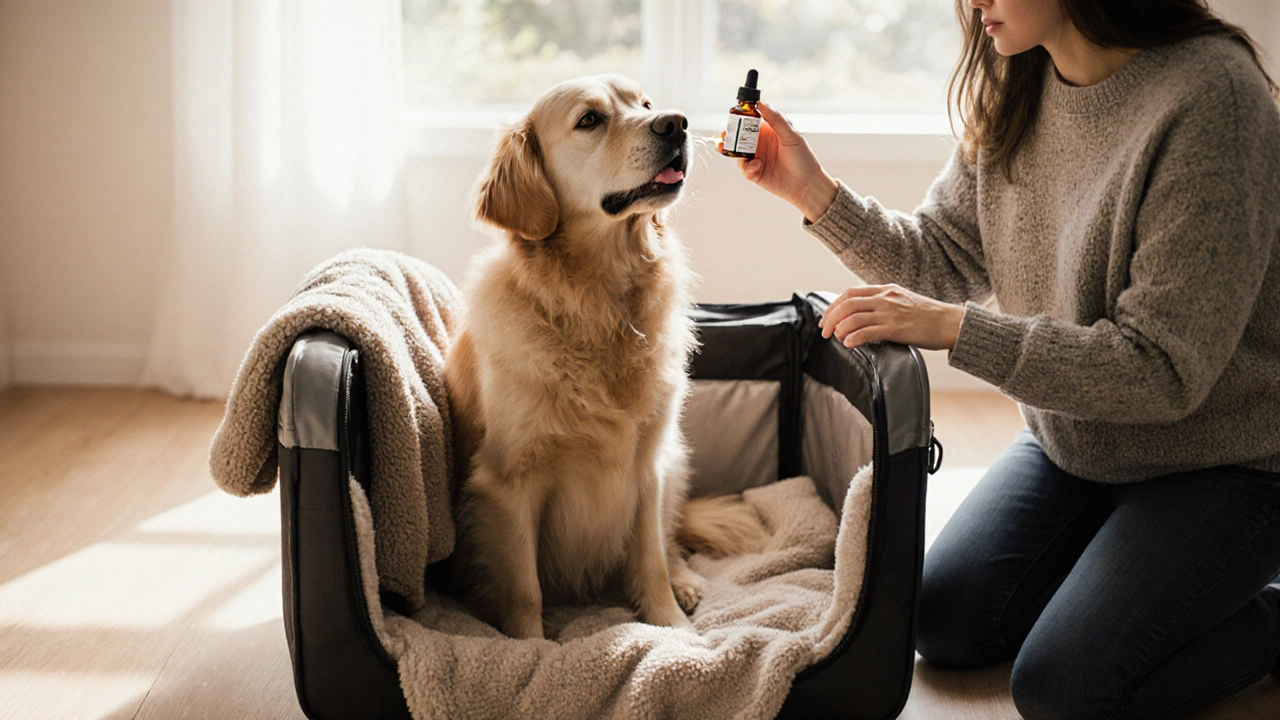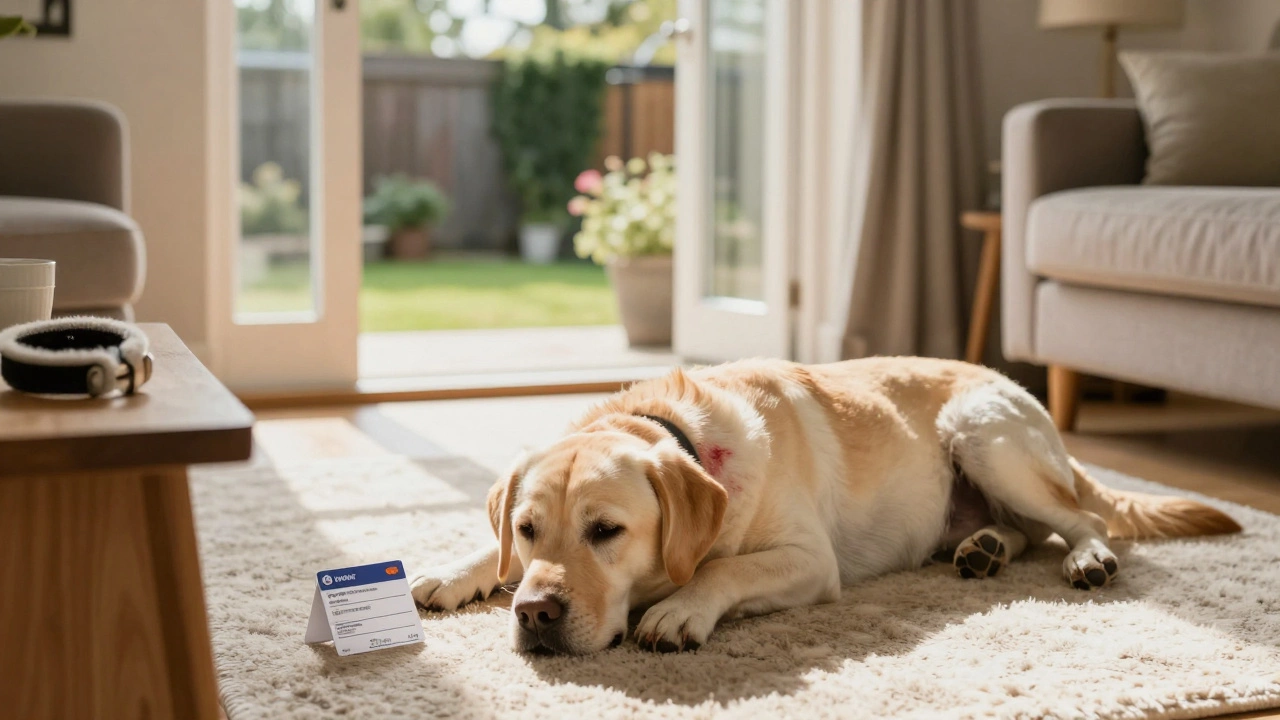Ever seen someone at an airport, dragging a crate twice the size of your carry-on, sweating as much from nerves as from effort? That’s probably a dog owner braving air travel with a mid-sized dog. No, it’s not just stars with teacup pups tucked into a Gucci bag. Plenty of people out there want to bring their forty-pound furry soulmate along—vacation, relocation, or a new adventure. But flying with a 40 lb dog is a special kind of challenge. Most airlines won’t let your dog curl up by your feet in economy. Every step, from packing the right crate to paperwork, can feel like its own mini-boss battle. Yet, with the right strategy, you and your buddy can touch down in a whole new city—stress dialed down, tails wagging.
Airline Rules and Options for Flying with a 40 lb Dog
The first eye-opener: few U.S. airlines allow a dog as large as 40 pounds to fly in the cabin. Tiny breeds? No sweat—they ride under the seat. But a forty-pounder crosses into the territory where most airlines only accept your dog as checked baggage or cargo. Each airline has its quirks and rules, but here’s what you can count on.
Every airline has clear dog policies. For example, Delta, United, and American Airlines do not allow large breeds, including those weighing 40 lbs, in the cabin—with rare exceptions for certified service animals. For non-service pets, airlines expect your dog to fly in the cargo hold or as special checked baggage. That means you won’t see your dog during the flight, but staff supervise pressurized, temperature-controlled spaces—much less scary than it sounds.
So what about crates? There’s a whole industry around airline-approved dog crates—called IATA-compliant crates. Airlines check dimensions closely. Your dog must be able to stand, turn around, and lie down comfortably. For most 40 lb dogs, expect to need a crate labeled for dogs up to 70 lbs for enough space. Measure your dog standing and compare that to the crate—no eyeballing. As for fees, U.S. airlines typically charge $200 to $500 each way. For example, United charges $349 for pets shipped with their PetSafe program. Canadian airline WestJet is friendlier, letting some larger breeds fly in cabin on certain domestic flights, so international options exist if you’re flexible.
Paperwork comes next. Most airlines require a recent health certificate from your vet—usually within 10 days of travel. Vaccinations and microchips may be non-negotiable, and some destinations demand specific tapeworm and rabies controls. Miss that, and your dog could be refused at check-in. Some countries enforce quarantine—Hawaii, Australia, and New Zealand are sticklers. Call the destination’s animal control authority, not just the airline.
Direct flights are your best friend—literally. Fewer plane changes mean less hassle and lower risk. If you have a layover where pets have to be rechecked, see if the airport offers an animal lounge or pet relief station: some of the bigger European airports (Frankfurt, Amsterdam) have facilities for pets in transit—think spa appointment for your dog.
| Airline | Large Dog Cabin Policy | Dog Cargo Fees | Special Notes |
|---|---|---|---|
| Delta | Cabin: No (too heavy/tall) | $200–400 | Dogs 70–100 lbs with crate max |
| United | Cabin: No | $349 (PetSafe) | Limited summer service (heat embargoes) |
| American | Cabin: No | $200–500 | Weight/crate restrictions differ per route |
| WestJet | Domestic: Sometimes | About $150 | In-cabin weight limit 22 lbs |
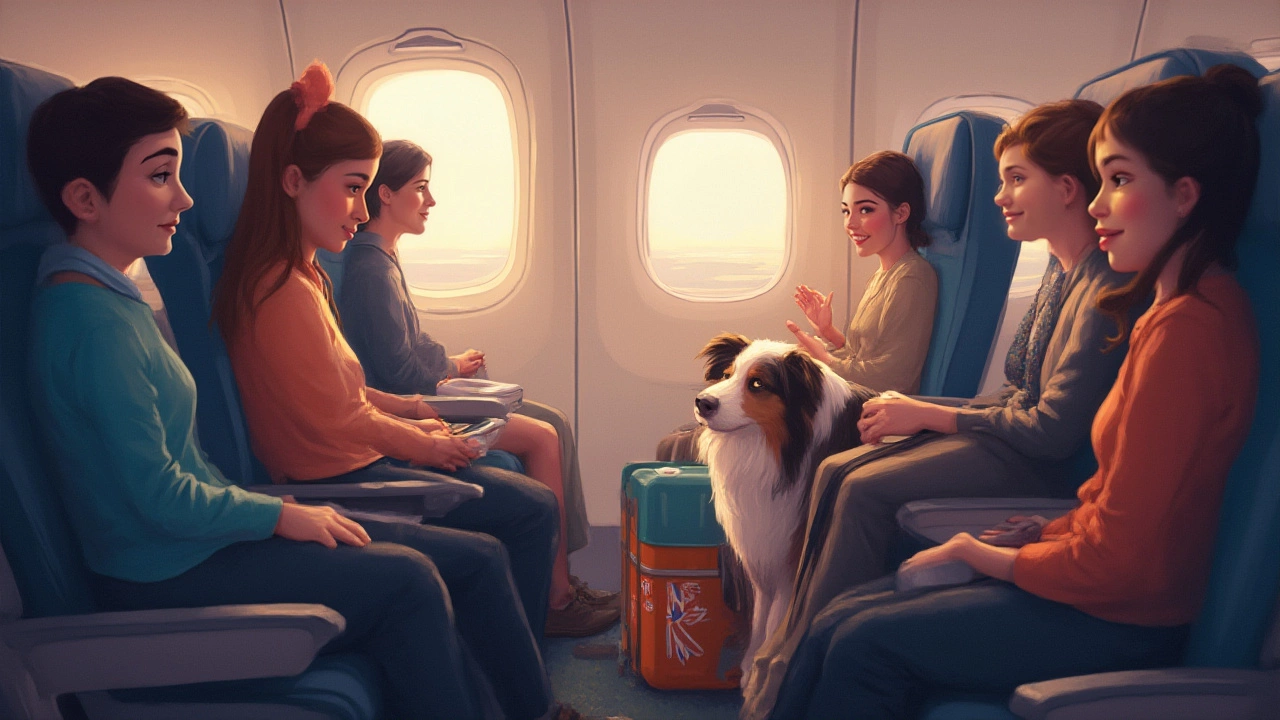
How to Prepare Your 40 lb Dog for Air Travel
You probably have more than one friend ready to say, “Just give your dog some Benadryl” and hope for the best. But your dog’s comfort and safety take actual planning. Start by getting your dog used to the crate, weeks—even months—ahead of time. Make the crate a cool, safe place. Toss treats inside, put in a favorite blanket, and let your dog chill in there, so the crate triggers comfort instead of panic. Crate training is life-changing for dogs that panic during travel.
Veterinarians get this question all the time: Should you sedate your dog? The American Veterinary Medical Association and airlines both strongly advise against it. Sedated dogs can have trouble breathing at altitude. Most travel-related pet deaths reported to airlines involved sedatives. Instead, stick with calming sprays, pheromones, or favorite toys and shirts that smell like home.
Exercise matters. The day before flying, go on an epic walk or play session. Tired dogs travel easier—they’re less likely to bark, whine, or try to escape the crate. Don’t load up on food within four hours of departure, but be sure your dog is well hydrated. Frozen cubes are great for the crate, melting slowly and giving your dog a chance to drink without messy spills.
Packing for your dog is more than throwing a leash in your bag. Airlines usually require clear labeling on crates: your contact info, pet’s info, and if there are special handling instructions. Secure bowls for food and water inside the crate. Attach a small baggie of extra kibble to the top in case of delays. Vet records, vaccine proof, and a recent photo of your dog (to help ID if they bolt) should all be in your personal item.
Check the timing. Some airlines have strict check-in windows for pets: you might need to show up 2–3 hours before departure. Don’t push the clock. Airlines can—and will—refuse your dog if you’re late, no exceptions. If possible, book early morning or late evening flights, especially in summer; cargo holds can get hot, and some airlines don’t allow pets during extreme temperatures. Winter? Same deal—avoid flying during cold snaps, especially if you’re headed somewhere frigid.
You might be worried about noise in the cargo hold. The truth? Most dogs do fine, according to a 2023 USDA study tracking over 1000 flights, with reported cargo pet incidents at less than 0.05%. But it's smart to check the risk—flat-faced breeds (like Frenchies, pugs) have a tougher time and are often not accepted.
- Call airline and confirm policies—don’t trust the website alone.
- Double-check destination's import requirements and pet rules.
- Crate train your dog—at least an hour daily for 2–3 weeks minimum.
- Book direct, early, or late flights to reduce stress.
- Label everything, pack extra documents, and bring a recent photo.
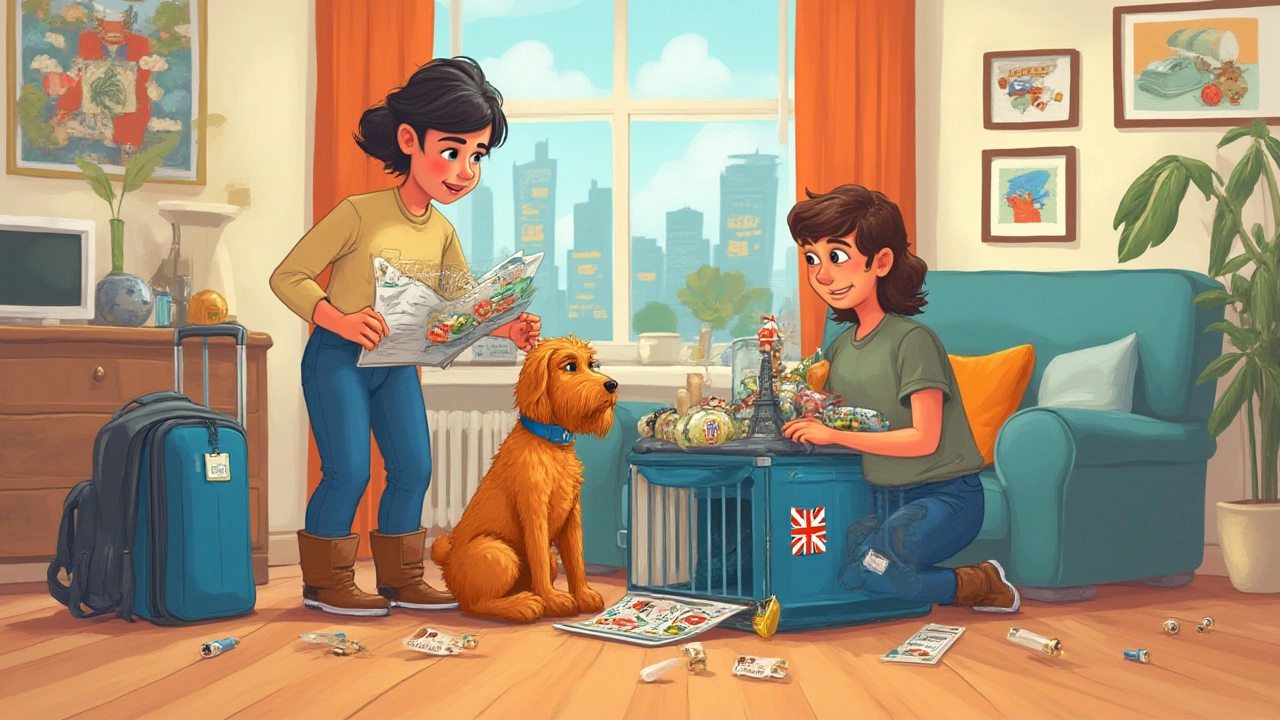
Tips for a Smooth Airport and In-Flight Experience with Your Dog
The airport is where the rubber meets the road. With a 40 lb dog, you’ll attract attention just hauling the crate through security. Aim for a rolling or collapsible crate to save your back. Most TSA checkpoints now let you carry your dog through the metal detector while the crate goes through X-ray. Be ready for extra screening: staff may swab your hands or check your dog and crate for explosive traces.
Potty breaks are a whole thing. Most large U.S. airports have pet relief areas post-security—think fake fire hydrants on Astroturf. It’s no dog park, but it saves an accident while boarding. Don’t rely on these being clean or empty—bring wipes and poop bags just in case. And be polite if other pet-parents are waiting their turn.
Handling stress is your real mission now. Remain calm, and your dog will pick up on it—dogs can smell fear, literally. If your dog barks or howls in the crate, slip in a chew or food puzzle. Some dogs respond well to a shirt you’ve worn recently; your scent calms them when everything else feels unfamiliar.
For multi-leg flights, your dog might be offloaded and rechecked at the connecting airport. Rare, but possible. If so, staff walk the crates to a pet holding area, and some airports will let you visit briefly. Double-check the process when you book. Never assume—the rules differ for international or codeshare flights.
Never open the crate outside a secure area. If your dog’s spent hours boxed up, it’s tempting to free them before you leave the airport. But new smells, baggage carts, and open doors can freak dogs out. Wait till you’re somewhere safe to let them out.
Here’s a tip frequent flyers swear by: snap a photo of your dog in the crate at the check-in desk. If the crate gets separated or delayed, airport staff can immediately see photos of what they’re searching for. Having your dog microchipped and wearing a tag (even in the crate) is a layer of protection nobody regrets.
- Arrive early. Pet check-in lines take longer than regular check-in.
- Favor airports and airlines with good cargo handling reputations.
- Bring your dog’s essentials in your own carry-on—meds, food, vet records.
- Be patient and positive with staff—it goes a long way.
- After landing, check your dog quickly for injuries, dehydration, or extreme stress, and don’t be afraid to contact airport authorities if something feels off.
Flying with a 40 lb dog isn’t always easy or cheap. But thousands of people do it every year and say the trouble’s worth the wagging tail at journey’s end. The dream of exploring new places with your dog is doable—as long as you plan, prepare, and stay cool when the surprises pop up. Airlines are slowly making it easier, and pet travel pros swap stories about trips gone right (and wrong) every week. Ready for your first flight with your best friend? Prep, checklist, go—and expect an adventure, every leg of the way.

